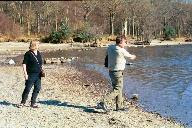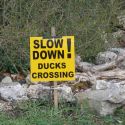Our first day of exploration, and we head for the northwest town of Guzelyurt (Morphou to the Greeks). Actually, we’re really headed just south of it, to a bay on the western edge of the country. Soli has a history going back six thousand years or more, became a Persian territory about 500 bc, and was Christian from very early times. The site contains the remains of a 4th century basilica, destroyed in the 7th century by Arab raiders, as well as ruins of a 12th century church built within the basilica remains. Interestingly, the mosaic tile floor of the older church are much more attractive than the tile floor of the later building, but by the 12th century mosaic had gone out of fashion. There is also an amphitheatre farther up the hillside, commanding an excellent view of the bay. This is 2nd century Roman, and once held 4000 spectators, but most of the original stone is now gone, in part, shockingly, because the British removed it to use in the building of Port Said and the Suez Canal. We’re the only visitors on the site, which must be rather busier in the summer, and would have been much more crowded in its historic heyday.
We’re surrounded by citrus orchards along the west coast and stop for lunch at a little restaurant where there appear to be two items on the (unwritten) menu - lamb kleftiko and a tasty meatball dish, all served with salad, humus, and tzatziki. The real prize, though, is the orange juice, freshly squeezed by the man who carried in an armful of oranges, probably from the orchard immediately outside the window by our table, and served in large wineglasses.






